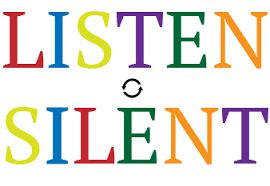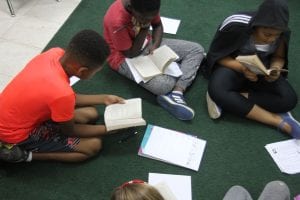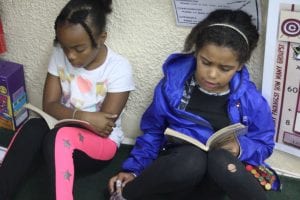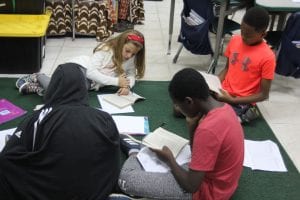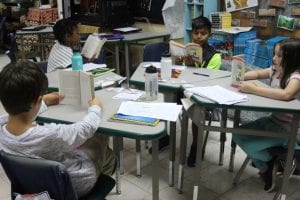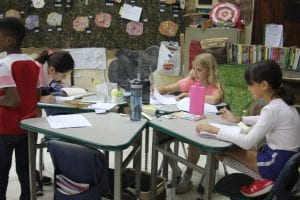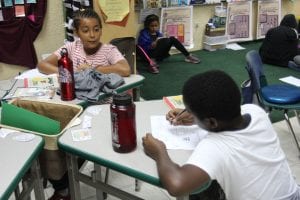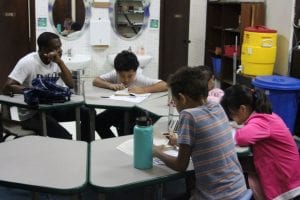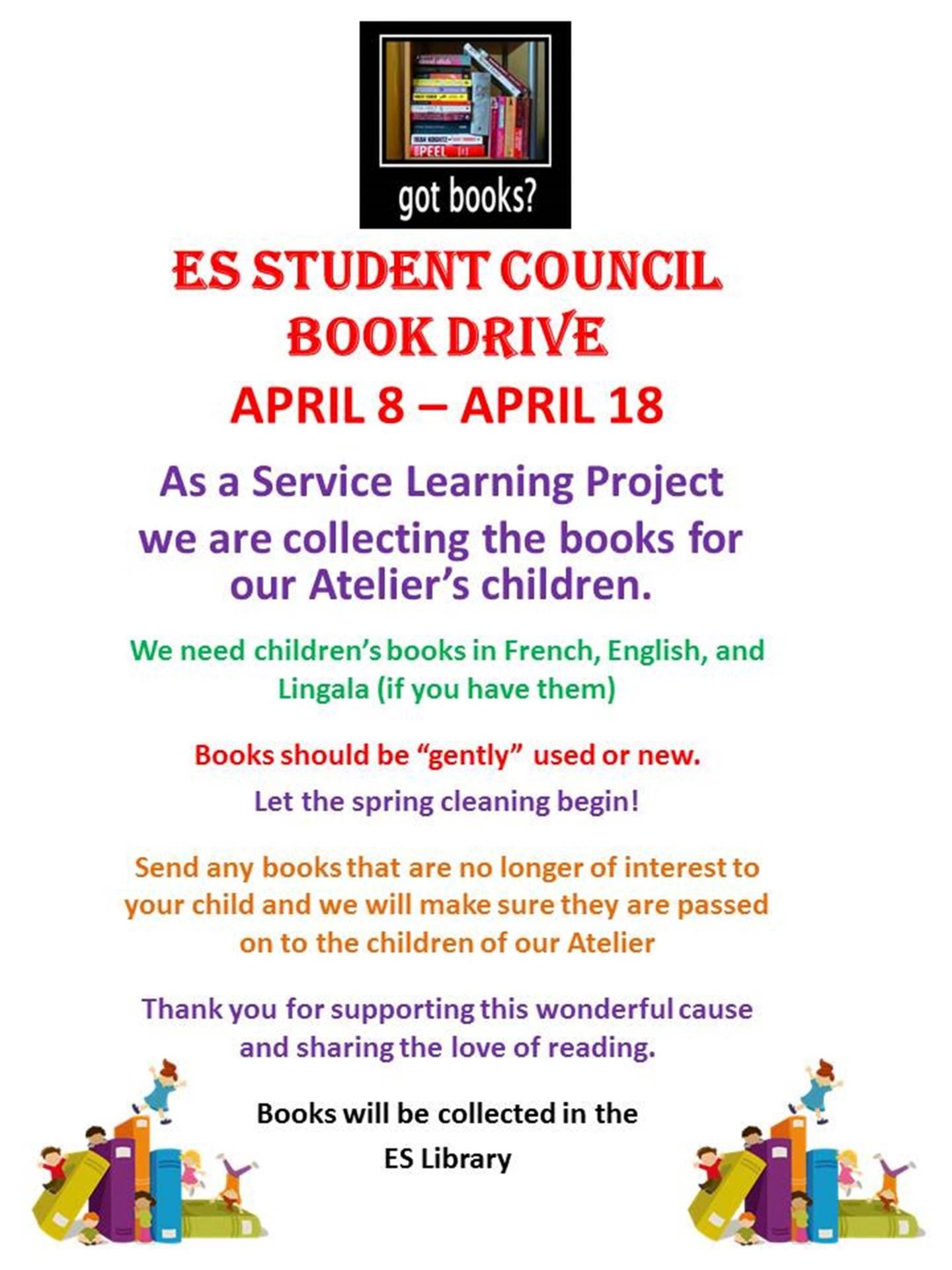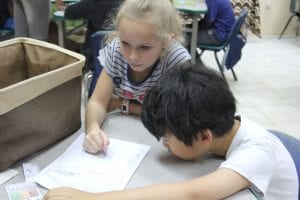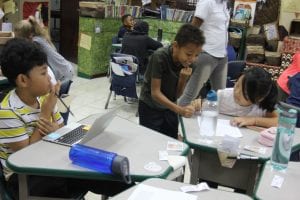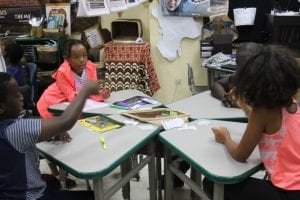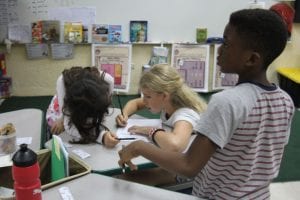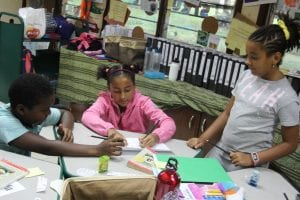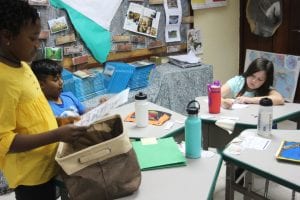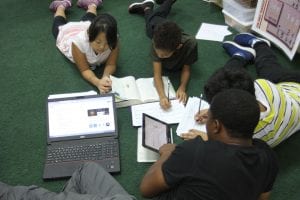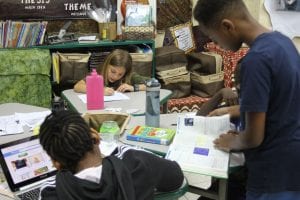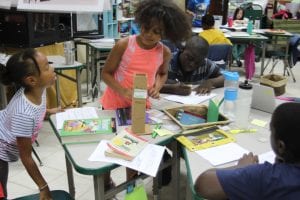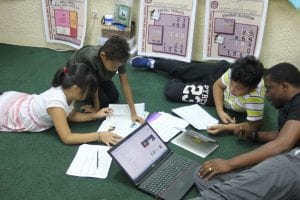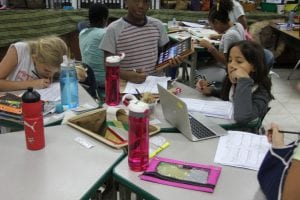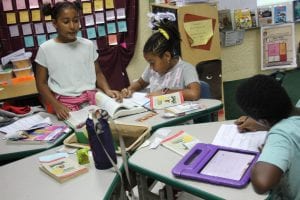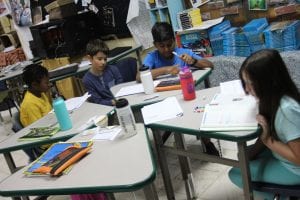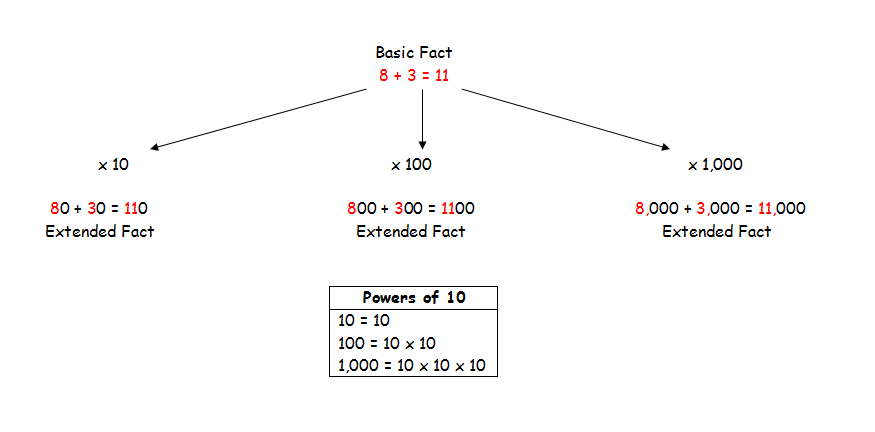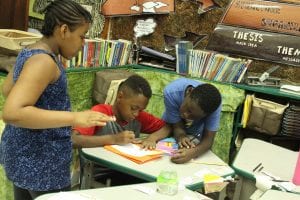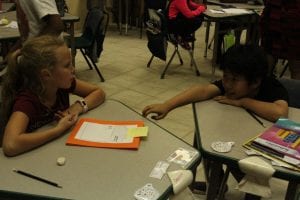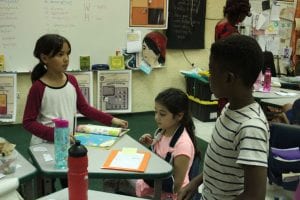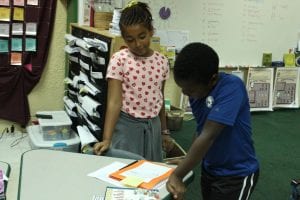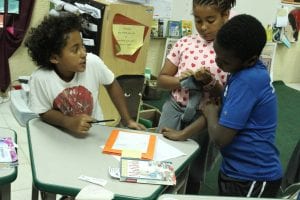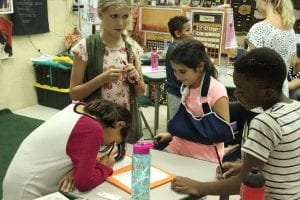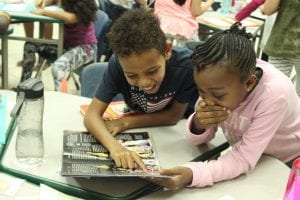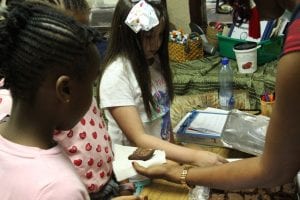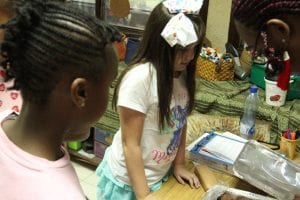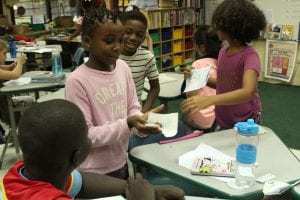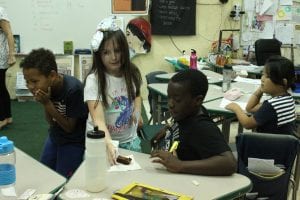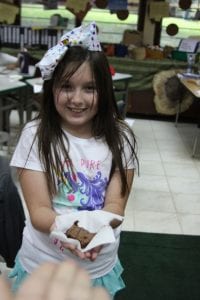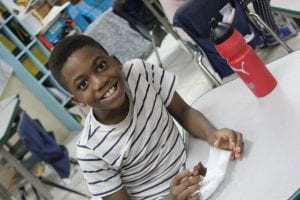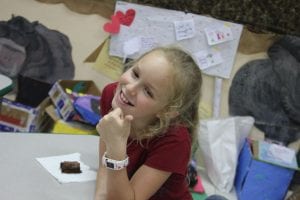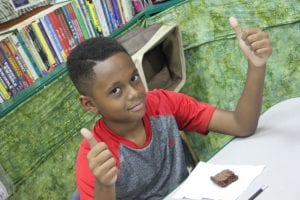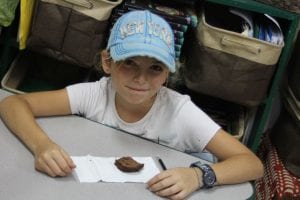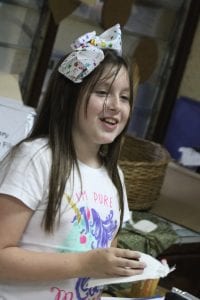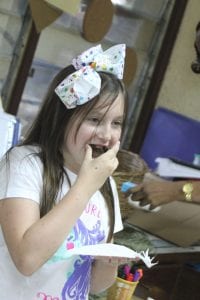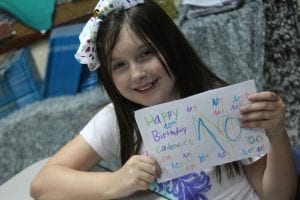Today, after spending some time working with our reading groups we reviewed what it means to “reflect on the questions, and respond in complete, thoughtful sentences.” We also our Secret Agent Tip: TTQA (Turn The Question Around) to help STRUCTURE our sentences. Going back in the text and determining the importance of details to justify our thinking is critical.
For example, one of our questions today was:
What do Koly’s mother and grandmother enjoy doing? How does this activity affect Koly?
Which answer do you think is more complete and thoughtful? Why?
- Embroidering. Koly learns to do it too to make money and to pass the time.
- Koly’s mother and grandmother enjoy embroidering. This skill, passed on to them from many generations before them, enabled them to sew all their hopes and dreams into the cloth… and earn money for the family. For Koly, embroidering allowed her to sew all her worries into stitches and to capture in cloth all the things she loved and valued. Her embroidered quilt was a source of comfort.
As we work though our novel, one goal is to develop the STRUCTURE of our responses and reflections into something solid, sustaining sentences that show scholarly synthesis.
We also explored ideas about angles today by creating and using a valuable angle-measuring tool – a paper protractor. To make the paper protractor, we used what we already know about the attributes of squares, rectangles, and triangles to partition our paper and label. We also tied in our work with fractions and division to help justify our thinking.
Part of our work today involved using benchmark angles to identify angle types and estimate angles sizes.
Our goal is to become increasingly precise in measuring angles using a variety of tools and strategies.
- Math is Fun – Angles
- Visnos – Angles (Watch instructions video)
- Math Playground
- LearnZillion – Measuring Benchmark Angles using Fractions of a Circle
- MathAntics – Geometry Video Series **Recommended**
If you want to extend and challenge your thinking, check out the following videos. I learned some things about the origins of the words, which was interesting.
To end our day, we took a few minutes to talk about Earth Day, which is coming up on Monday, April 22. We will be participating in a learning exchange with third and fifth grade students, and we will be responsible for creating a set of activities that engage our peers’ in learning and thinking about issues that affect our earth. One big question is, how will we STRUCTURE our time and tasks to make the biggest impact?

